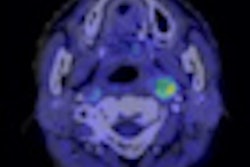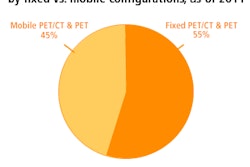Tuesday, November 29 | 3:20 p.m.-3:30 p.m. | SSJ19-03 | Room S505AB
In this presentation, researchers will discuss how standardized uptake values (SUVs) and glucose metabolic rates (GMRs) can help differentiate between tumors and benign lesions when evaluating patients with central nervous system lesions with FDG-PET.The group from the University of California, San Diego (UCSD) analyzed 18 patients with FDG-PET scans. There were 33 central nervous system lesions among the patients, with 26 tumors and seven benign lesions or post-treatment changes. Final diagnosis was based on brain biopsy in 16 cases and the patients' clinical outcomes in 17 cases.
The researchers' analysis showed a mean SUV value for tumors of 7.20 (± 4.24), compared with 2.67 (± 0.39) for benign lesions. The mean GMR for tumors was 25.9 (± 15.4), compared with 9.55 (± 1.85) for benign lesions.
The ratio of ipsilateral cerebellar cortex activity was 2.02 (± 0.78) for tumors and 0.86 (± 0.37) for benign lesions using the SUV image, and 2.02 (± 0.78) for tumors and 0.86 (± 0.37) for benign lesions using the GMR image.
In addition, the ratio of contralateral white-matter activity was 2.88 (± 1.35) for tumors and 1.46 (± 0.39) for benign lesions using the SUV image, and 3.54 (± 1.77) for tumors and 1.55 (± 0.51) for benign lesions using the GMR image.
Using a threshold of greater than 3 for SUV and 13 for GMR, the researchers found that both measures provided accuracy of 90%. Using a threshold of 1 for the ratio of ipsilateral cerebellar cortex activity, accuracy was 80% using SUV and 93% with GMR. With a threshold of 2 for the ratio of contralateral white-matter activity, accuracy was 70% using SUV and 79% for GMR.
"The increased metabolism seen on the FDG-PET scan helps differentiate between tumor recurrence and radiation necrosis," said presenter Dr. Asae Nozawa from UCSD's department of radiology and division of nuclear medicine. "Having a quantitative index or ratio may provide an additional diagnostic criterion with the visual interpretation."
The benefit to patients would be the ability to provide better clinical management of brain tumors after therapy, he said.




















